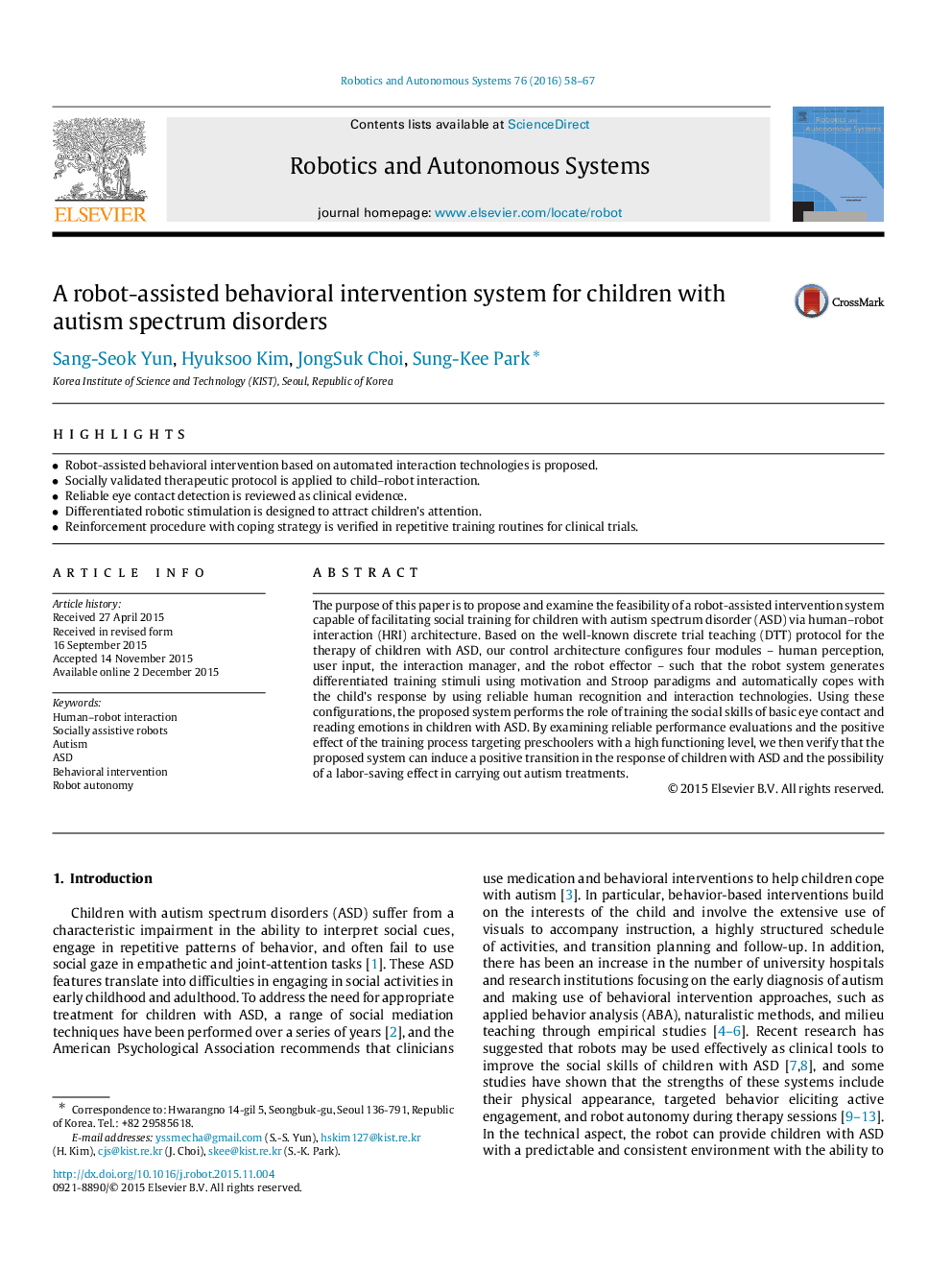| کد مقاله | کد نشریه | سال انتشار | مقاله انگلیسی | نسخه تمام متن |
|---|---|---|---|---|
| 412015 | 679605 | 2016 | 10 صفحه PDF | دانلود رایگان |
• Robot-assisted behavioral intervention based on automated interaction technologies is proposed.
• Socially validated therapeutic protocol is applied to child–robot interaction.
• Reliable eye contact detection is reviewed as clinical evidence.
• Differentiated robotic stimulation is designed to attract children’s attention.
• Reinforcement procedure with coping strategy is verified in repetitive training routines for clinical trials.
The purpose of this paper is to propose and examine the feasibility of a robot-assisted intervention system capable of facilitating social training for children with autism spectrum disorder (ASD) via human–robot interaction (HRI) architecture. Based on the well-known discrete trial teaching (DTT) protocol for the therapy of children with ASD, our control architecture configures four modules–human perception, user input, the interaction manager, and the robot effector–such that the robot system generates differentiated training stimuli using motivation and Stroop paradigms and automatically copes with the child’s response by using reliable human recognition and interaction technologies. Using these configurations, the proposed system performs the role of training the social skills of basic eye contact and reading emotions in children with ASD. By examining reliable performance evaluations and the positive effect of the training process targeting preschoolers with a high functioning level, we then verify that the proposed system can induce a positive transition in the response of children with ASD and the possibility of a labor-saving effect in carrying out autism treatments.
Journal: Robotics and Autonomous Systems - Volume 76, February 2016, Pages 58–67
